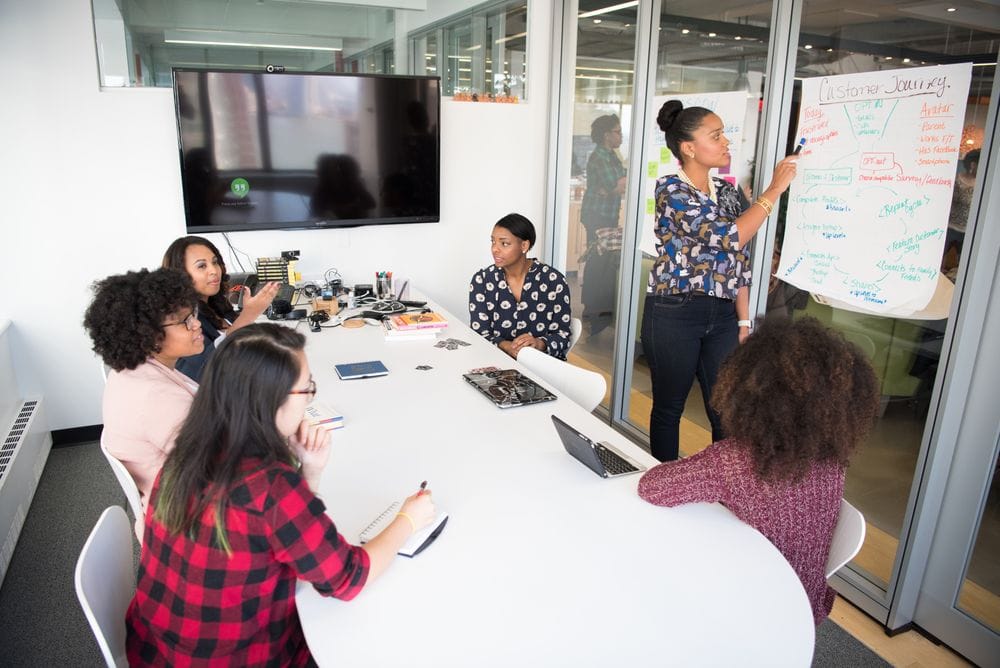“Consensus Building Conversations”
The concept seems so simple, doesn’t it?
Get a group together. Present the issue. Have some consensus building conversations…and POOF…Agree!
So why is the process never that simple?
In order to understand consensus building conversations, it is important to know that everyone interprets and processes information differently. Moreover, people’s unique experiences shape individual perspectives. Therefore you shouldn’t jump right into “debating the facts” and rushing the “decision-making process”. When personal knowledge and individual views around the topic are ignored, things get messy.
Taking this a step further, participants feel “run over, not heard, disrespected, or ignored” when group views are ignored. Resulting conversations do not achieve real consensus. As a result, it is impossible to get the buy-in needed to ensure the successful implementation of your proposed program or project!
So how exactly can you achieve Group Consensus? Do you remember your mama saying, “It’s not what you said it’s HOW you said it?” As it turns out, It really is WHAT you say and HOW you say it. Likewise it is equally important to HEAR what others are saying and how they say it.
With this in mind, our team utilizes a variety of different facilitation techniques for consensus building conversations. For example, we are fans of the internationally recognized “ToP Method (Technology of Participation).” ToP works best with groups of 9-20 participants though it can include more people.
Here is a snapshot of the ToP process:
Begin the session by providing CONTEXT for the conversation. Specifically, share in 5 minutes or less who is in the room and why. In order to respect everyone’s time and voice, explain this focused conversation will achieve consensus on ONE topic only. Next, ask everyone to limit responses to the questions asked. Write down the FOCUS QUESTION on whiteboard/poster in LARGE FONT. As a result, this will remind the group to achieve consensus on that ONE topic.
In order to avoid ‘going down a rabbit hole’, non-related questions are written down and posted in “the parking lot”. A ‘parking lot’ is a whiteboard or sticky notes on a wall. After the FOCUS topic is addressed, the group decides if/when any ‘parking lot’ questions should be tackled.
Once a focus question is presented (you aren’t asking for responses just yet!), you will begin the process below.
1. Begin with an OBJECTIVE question about the focus topic. Give everyone in the room a chance to offer a one-sentence response.
These responses share the collective knowledge of the group. Moreover, it saves you from jumping into the “Educator” role.
Sample OBJECTIVE questions include:
a. What do we know about [insert topic/issue]?
b. What is some relevant information we should consider related to [insert topic/issue]?
After everyone has had the opportunity to share facts/knowledge about the subject, discuss their reactions to that information.
2. Pose a REFLECTIVE question to the group.
Avoid “calling people out”, but encourage active participation. For instance, use body language (walking around the room/eye contact/leaning forward with arms open). Avoid the temptation to “fill the silence”. Encourage participants to jump in and share “popcorn style.” Consider a group question. Something like “Does anyone on this side of the room feel like sharing your thoughts/feelings/reactions to this question?”.
Sample REFLECTIVE questions:
a. What is your experience with [insert topic]?
b. What is your initial reaction to the inclusion of [insert topic]?
After everyone has shared their reactions/experiences, it is time to move on to the interpretation process.
3. Pose an INTERPRETIVE question. The goal is assembling the facts and feelings around the focus topic.
Sample INTERPRETIVE questions include:
a. How might this new (insert topic) enhance our church offerings/our outreach programs?
b. What are the implications of including (insert topic) in our church/program?
c. What are some of the root issues related to the inclusion of (insert topic) in our church/program?
At this point the group “lays everything on the table” and transitions into decision-making mode.
4. Finally, you will pose a DECISIONAL question.
Sample DECISIONAL questions might be:
a. If we are to move forward with (insert topic), what needs to happen?
b. If we move forward with (insert topic), when do we begin?
A successful facilitation brings the final conversations/contributions back to the initial focus question. For example:
“How should we proceed in regards to including {insert topic/subject] in the upcoming church renovation project?”
5. Confirmation of Next Steps:
At this point you have determined what must happen to move forward. Now you must clarify group consensus to move forward.
To test group consensus, you will take a vote. If the majority is “no,” clarify the barriers that contributed to that decision. If the majority is “yes,” review, outline, and honor the steps the group outlined in section 4.
Once you have reached a consensus, you will be ready to begin ACTION PLANNING. That is a separate facilitation technique. Strategic Planning may also be a good next step. That said, it uses the Consensus Building process we’ve outlined here with the ToP Method.
You may find some Upcoming Events to attend or helpful information in our Free Stuff section. As always, Keep Growing for Good!


